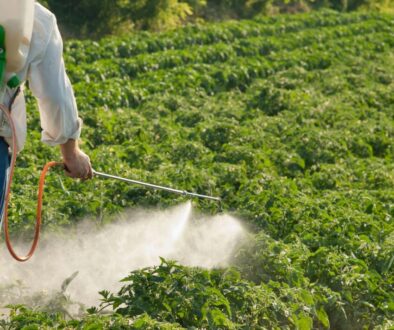PFAS in sludge spread on farmland poses health risks, EPA report says
By Shannon Kelleher and Carey Gillam
US regulators on Tuesday added to growing concerns about the long-standing practice of using sewage sludge to fertilize farmland, releasing a report warning that chemicals contaminating the sludge pose heightened human health risks for cancer and other illnesses.
The Environmental Protection Agency (EPA) said two types of hazardous per- and polyfluoroalkyl substances (PFAS) widely found in sewage sludge, a byproduct of wastewater treatment, can contaminate the milk, eggs and meat that come from farm animals raised on agricultural land where the sludge has been applied. Those “exposure pathways” are among multiple ways in which people can be at risk, the EPA said.
The agency focused on perfluorooctane sulfonic acid (PFOS) and perfluorooctanoic acid (PFOA), two well-studied types of PFAS chemicals linked to testicular and kidney cancer as well as liver problems. The EPA last spring designated PFOS and PFOA as hazardous substances under the so-called Superfund law and announced the first legally enforceable limits for the two chemicals and four other types of PFAS in drinking water.
The EPA said that though the majority of US food crops are not grown with the use of sewage sludge as a soil conditioner or fertilizer, because of the “extreme persistence” of PFOA and PFOS in soils, land where sewage sludge was applied years ago may still be contaminated.
The agency’s draft risk assessment, which was made publicly available Jan. 14, said that “under certain scenarios and conditions,” land-applying or disposing of sewage sludge containing 1 part per billion (ppb) or more of PFOA or PFOS “could result in human health risks exceeding the agency’s acceptable thresholds for cancer and noncancer effects.”
The draft assessment models health risks for people who live on or near contaminated sites or who eat primarily food or drinking water from PFAS-contaminated areas. The report will be available for public comment over a 60-day period and may help the agency determine regulatory actions it might take under the Clean Water Act, said the EPA.
The risks are “expected to vary across regions and among properties depending on the concentration of PFOA and PFOS in sewage sludge; the number of land applications; the volume of sewage sludge land applied; the climate, geology, and hydrology at the use or disposal site; agronomic practices; human behavioral patterns (e.g., drinking water ingestion rates, consumption rate of impacted products); and many other site-specific factors,” the agency stated in its report.
Farmers across the US are increasingly finding PFAS chemicals on their land, including on dozens of farms in Maine, where regulators are investigating hundreds of sites where sludge spread decades ago presents a risk. Two Texas farm families filed a lawsuit last year against the biosolids company Synagro after their operations were allegedly “poisoned” by tainted sludge spread on their neighbor’s property.
“Congress must ensure these farmers aren’t burdened with the costs of fixing this problem – that responsibility should ultimately rest with the polluters,” David Andrews, acting chief science officer at the nonprofit the Environmental Working Group (EWG), said in a statement. Even organic farms, which are not permitted to use sewage sludge, can be contaminated with PFAS if previous owners spread sludge on the land, noted Andrews.
The National Association of State Departments of Agriculture considers PFAS a “major hazard” to US farmers and ranchers. According to an analysis of surveys from biosolids industry groups, sludge is spread on almost 70 million acres of US farmland, suggesting that agriculture’s PFAS problem may be much more prevalent than what is currently known. Adding to the problem, PFAS chemicals are increasingly being added to pesticides sprayed on crops, according to a study published last summer.
Despite mounting concerns, the EPA has not set limits for PFAS in sewage sludge used as fertilizer, although the agency recommends that states monitor sludge for PFAS contamination and require industries that discharge the chemicals to pretreat their wastewater “when appropriate.”
In response to a lawsuit alleging that the EPA violated the Clean Water Act by failing to identify PFAS in sludge spread on farmland, the agency claimed in a court filing last fall that it is not legally required to regulate the toxic chemicals in sludge widely used to fertilize farmland.
(Featured image by Getty Images for Unsplash+.)




